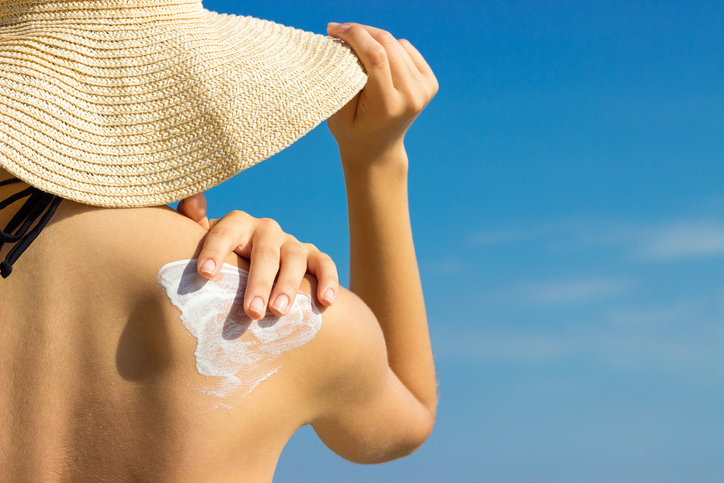
A recent study published in JAMA corroborated a statement from the U.S. Food and Drug Administration (FDA) last year that found active ingredients in sunscreen can be absorbed into the bloodstream. This recent study replicated a pilot trial conducted in 2018 and reported on by the FDA in May 2019. The FDA has proposed a rule requiring sunscreen manufacturers to provide additional information on the active ingredients in their products.
The randomized clinical trial took place at a clinical pharmacology unit in West Bend, Wisconsin and included 48 healthy participants (mean age, 38.7 years; 50% were women; 48% were white) between January 2019 and February 2019. Participants were randomized to one of four sunscreen products: lotion (n=12), aerosol spray (n= 12), non-aerosol spray (n=12), and pump spray (n=12).
Sunscreen was applied at 2 mg/cm2 to 75% of body surface area at zero hours on day one and four times on days two through four at two-hour intervals. A total of 34 blood samples were collected over 21 days from each participant.
Researchers assessed maximum plasma concentrations for six active ingredients in sunscreen: avobenzone, oxybenzone, octocrylene, homosalate, octisalate, and octinoxate. The FDA recommends exposure of these ingredients not exceed 0.5 ng/mL.
All ingredients exceeded maximum recommendations from FDA
Geometric mean maximum plasma concentrations of all six active ingredients were greater than 0.5 ng/mL, and this threshold was surpassed after a single application for all active ingredients.
For avobenzone (primary outcome), the overall maximum plasma concentrations were 7.1 ng/mL for lotion, 3.5 ng/mL for aerosol spray, 3.5 ng/mL for non-aerosol spray, and 3.3 ng/mL for pump spray.
For oxybenzone, the concentrations were 258.1 ng/mL for lotion and 180.1 ng/mL for aerosol spray. For octocrylene, the concentrations were 7.8 ng/mL for lotion, 6.6 ng/mL for aerosol spray, and 6.6 ng/mL for non-aerosol spray. For homosalate, concentrations were 23.1 ng/mL for aerosol spray, 17.9 ng/mL for non-aerosol spray, and 13.9 ng/mL for pump spray. For octisalate, concentrations were 5.1 ng/mL for aerosol spray, 5.8 ng/mL for non-aerosol spray, and 4.6 ng/mL for pump spray. For octinoxate, concentrations were 7.9 ng/mL for non-aerosol spray and 5.2 ng/mL for pump spray.
The most common adverse event was rash (n=14).
Despite the findings, the researchers cautioned, “These findings do not indicate that individuals should refrain from the use of sunscreen.”







 © 2025 Mashup Media, LLC, a Formedics Property. All Rights Reserved.
© 2025 Mashup Media, LLC, a Formedics Property. All Rights Reserved.